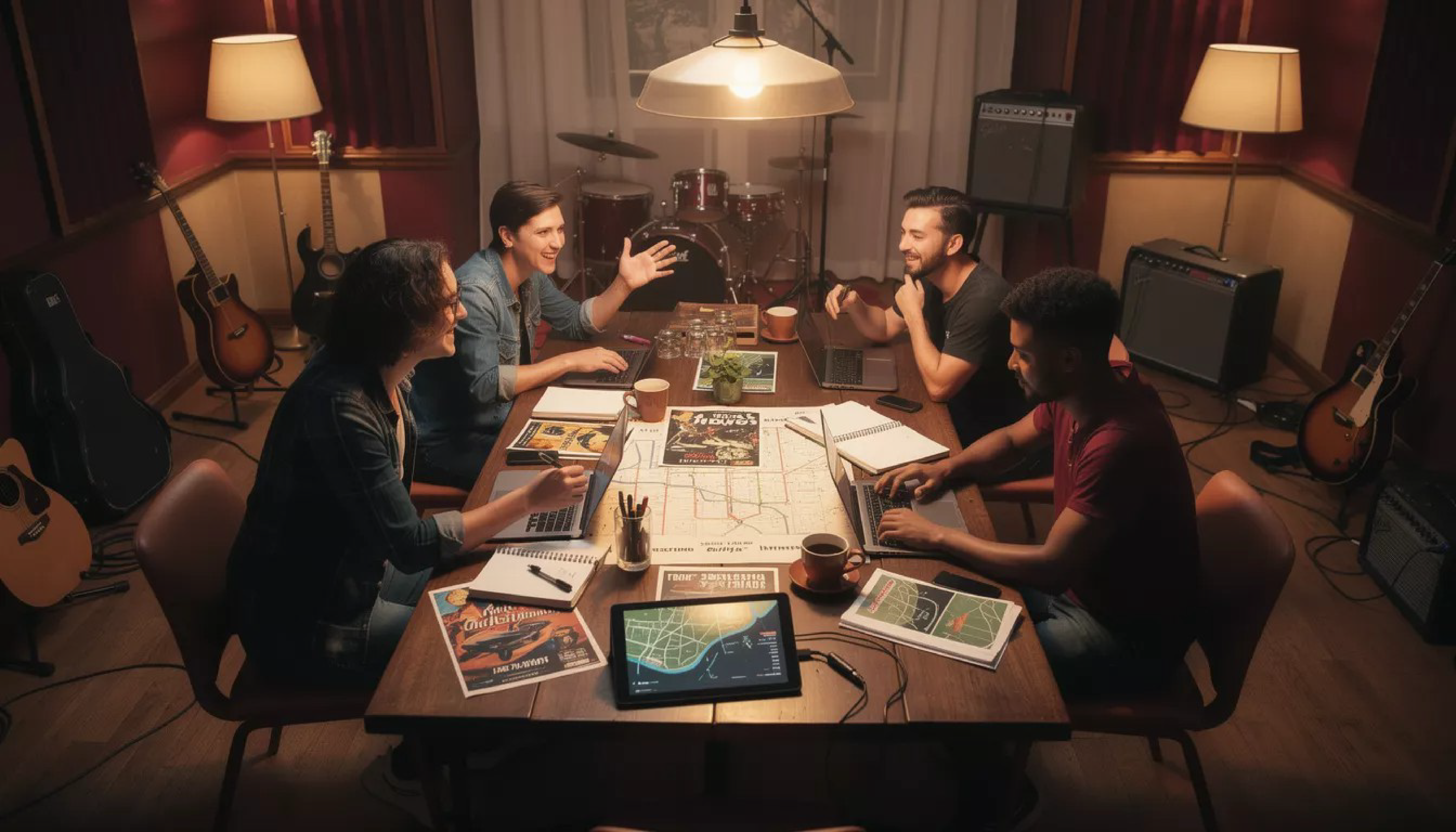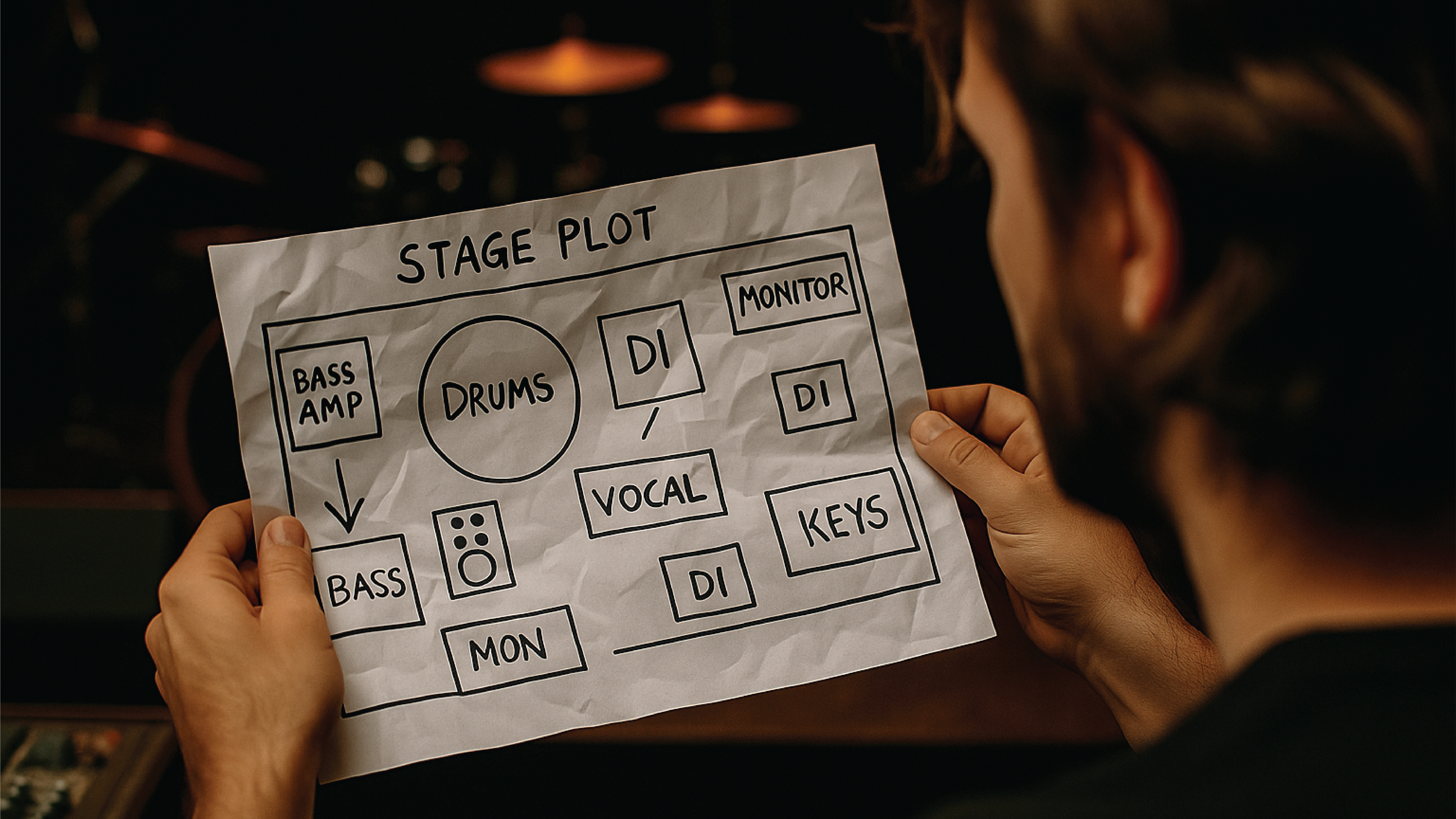
Get your free Stage Plot Template Get your free Stage Plot Template Access Now


What is a stage plot?
Whether you’re playing your first local gig or lining up for a multi-band festival, your stage plot is the one thing that can save your set before you’ve played a single note. In this article, we break down exactly what goes into a professional stage plot, why venues and sound techs rely on them, and how Stage Portal makes creating and sharing yours easy.
A stage plot is a simple visual diagram that shows the layout of your band on stage. It includes where each member stands, which instruments are being used, where monitors go, and any key bits of gear the sound crew needs to know about. If you’re a new band, don’t assume this is something only headliners or touring acts need. A clear, basic stage plot helps you look professional and makes everyone’s life easier, including yours.
You don’t need to be a graphic designer to make a stage plot that gets the job done. In fact, the simpler and clearer it is, the better. Here's what you should always include:
Where each band member is located, with labels (e.g. “Lead Vocal”, “Bass Amp”, “Drum Kit”).
Where on-stage monitors should be placed and which band member they’re for.
List what instruments need DI boxes and what mics or lines are required.
Any unusual gear, risers, or tech the crew should prepare for.
Always include your act name and a phone or email in case the team needs to follow up.
The biggest mistake? Not submitting a stage plot at all. The second biggest? Sending one that’s confusing, cluttered, or overly technical. You don’t need to draw it in 3D or use special software. Simple boxes, clear labels, and one page are all you need. Keep it functional, not fancy.
At a festival we ran, one band showed up with extra members and gear that wasn’t listed anywhere. No stage plot, no input list. The crew had to scramble to set up, and it led to a chaotic soundcheck and a rushed changeover, something that could’ve been avoided with a simple diagram submitted in advance.
For sound engineers and venue staff, a clear stage plot allows them to prep the setup before you arrive. That means mics, monitors and DI boxes are already in place, saving time and stress. Soundchecks run smoother, transitions are tighter, and you get to focus on playing your best.
In short: a stage plot isn’t just for the crew, it’s for you.
If you want more information on what to include in your technical rider check out our Band Riders 101 Article here.
With Stage Portal, you can store your stage plot and tech rider in one place and share it with venues automatically. No more last-minute email attachments or chasing sound engineers on gig day. Upload once, link it to your booking, and let the platform handle the rest.
We’ve even included an example stage plot you can download and edit for your band. Simply fill in the form at the bottom of this page for the template and you’ll be ahead of 90% of new acts.
Taking 10 minutes to create a clean, clear stage plot can save you hours of chaos. It helps you sound better, feel more relaxed on stage, and earn a reputation as a band that’s great to work with. Whether you’re playing pubs or festival stages, it’s one of the smartest things you can do.
🚀 Ready to simplify your gig prep?
Start your free trial of Stage Portal today and keep your bookings, riders and stage plots all in one place
Discover the latest insights.